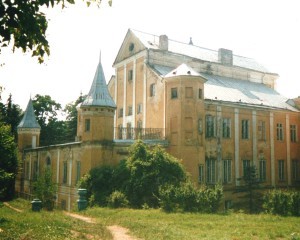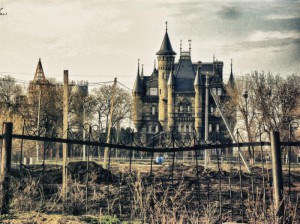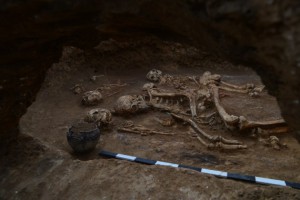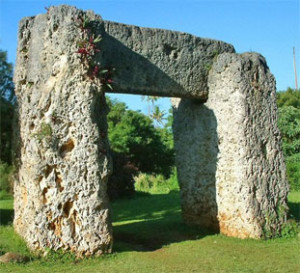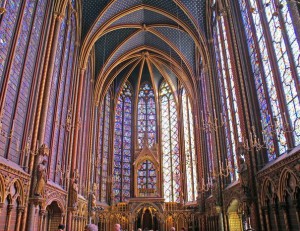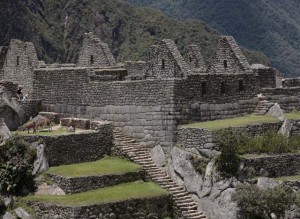The most ancient structures in the world
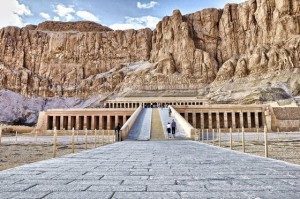 Geological structure. Like North America, Eurasia millions of years ago was part of the ancient continent of Laurasia. From other continents of the globe it features an extremely complex crustal structure. This is the result of a long and complex geological history of its development.
Geological structure. Like North America, Eurasia millions of years ago was part of the ancient continent of Laurasia. From other continents of the globe it features an extremely complex crustal structure. This is the result of a long and complex geological history of its development.
Gigantic in size Eurasia is not only all Eurasian lithospheric plate . But some of the other Indo-Australian . Along the line of collision, the crust is crumpled in folds – they formed the Alpine-Himalayan fold belt . Therefore, the mountain that appeared in this zone, located on the fringes along the coast, as on other continents, and inland and southern parts of Eurasia. Along the East coast of the mainland stretches another fold belt Pacific . arising at the junction with the Pacific lithospheric plate.
Fold belt are seismic zones, where the intense movements of the earth’s crust, earthquakes and volcanoes. The largest active volcano in Europe within Mediterranean seismic belt is Hekla, Etna and Vesuvius . Active volcanoes of Asia – Klyuchevskaya Sopka, Fuji, Krakatoa, and others – are Pacific seismicheskogo.
Different age orogen linking the old ( East European, Siberian, etc.) and young people ( Western, Turan ) platform underpinning Eurasia. The platform is relatively stable areas of the earth’s crust, but are experiencing slow vertical movements.
In Northern Eurasia, as in North America, had ancient glaciation . The Scandinavian Peninsula, where the largest center of glaciation, the glacier was coming to the South. His tongue reached even the territory of Ukraine. The glacier melted around 14 thousand years ago.
Fig. The crustal structure of Eurasia
Work with the map
1. What is lithospheric plates with Eurasia?
2. Name the old and young age platform underlying the continent.
3. Name boards, which emerged in the East European platform.
4. In what places have the field young folding?
5. In which areas of Eurasia lay seismic zone? Name the active volcanoes within their limits.
6. What are the minerals formed on the platforms? What they originate?
7. Where concentrating minerals of igneous and metamorphic origin?
RELIEF. Complex geological structure of the continent took its toll on the terrain. In comparison with other continents the surface of Eurasia, the most contrast: there are the highest mountains on Earth and plateau ( Himalayas, Tibet ) and deep hollow land ( Dead sea basin ). In the Eurasian plains, plateaus and mountains cover about the same area.
The plains of varying heights placed on platforms. They are enormous in size and span thousands of kilometers. So, the Eastern European plain . What lies on the ancient East platform is one of the largest plains in the world. Its relief is complex: highlands ( Central and others) alternate with lowlands ( black sea, Caspian – Lowland, lying below sea level by 28 meters). On the relief of the Northern part of the plains has affected the activities of the ancient glacier. He flattened rocky ledges, brought numerous boulders and put crushed rocks.
In Northern Eurasia, a young West platform is West-Siberian plain. Its surface has a concave, saucer like, shape. So much plain swamped. The Central Siberian plateau . That formed in ancient Siberian platform, is a high plain, which on the surface during ancient volcanic eruptions lava flows formed the high step of the plateau.
On the South of the continent in ancient Korean is Great Chinese plain . Between the Indostan and on the plateau by the Dean . covered with basaltic lava of ancient volcanic eruptions. Lowland Indo-Gangetic and Mesopotamian folded river sediments, sometimes reaching thousands of feet.
Records
The lowest place on land on Earth – the Dead sea basin, elevation of which is -397 m. the cave is a continuation of the rift faults in East Africa.
Mountains of Eurasia arose in different epochs of mountain building, so have different height and shape of surfaces. Across the entire continent from West to East stretched a long on the planet zone of young folded mountains – Pyrenees, Alps, Apennines, Carpathians, Crimea, Caucasus, the Himalayas, Tibet highlands. They formed in the last Alpine orogeny epoch, therefore, as a rule, tall and powerful, with steep slopes and sharp peaks-peaks.
Alps – the Largest and highest mountain system in Europe. Their sharp ridges rise to a height of 4 000 m and the highest peak of Mont Blanc, 4 807 reaches the Pyrenees, several parallel high ridges with snow-capped peaks stretch on the Iberian Peninsula. High Apennines traverse the whole of the Apennine Peninsula. They are composed of different rocks, therefore, have both pointed and rounded tops. The Carpathians also have the medium-high mountains. They are not very resistant to damage rocks (sandstones, shales, limestones), so their tops are rounded, and the slopes cut by river valleys. The ridges of the Crimean mountains stretch in three parallel strands along the southern coast of the Crimean Peninsula. They have aligned smolopodobnyy vertices, called Yayla.
Caucasus mountains located between the Black and Caspian seas. Their ranges towering cones of extinct volcanoes – Elbrus and Kazbek . Majestic and inaccessible Himalayas, Highest mountain system of the globe. Their highest peak, as you know, there is mount Everest . That snow-capped pyramid rises to a height of 8 850 meters to the North lies Tibet highlands – a Combination of high flat plains (altitude 5 000 m) and very high (up to 7000 m) mountain ranges. It is raised with the Himalayas and reached the record for plateau height.
Old mountains, are located in areas of ancient folding, survived worse. They are generally low and have rounded peaks. So, ploskoverhi medium-high Scandinavian mountains severely damaged. Of the Ural mountains . Long belt stretched from North to South, just destroyed and low.
Mountains of the Tien Shan too old and eventually were destroyed. However, subsequent horotvorennya they rose again. So now they are very high, their steep slopes, and flat tops. These mountains are called renewed .
Interesting geography
Names of mountains in the translation of different languages have roughly the same value. Compare: the Alps – high mountains . Tien Shan – celestial mountains . The Pyrenees peak . Carpathians rock . Ural – hill; Caucasus – snow-white mountain, Himalaya, home of snow . The highest mountain of the planet – the top of the Himalayas, located on the border of Nepal and China, the Nepalese call Sagarmatha – the Owner of the sky . And the Tibetan – Chomolungma – Goddess mother of the world . It is interesting that the locals adored this summit, not even knowing that she is the highest on Earth. This is mankind learned only in 1852, when the employees of the topographic service of India identified its height. They gave her the name of Everest in honor of George Everest . Supervising topographic office.
Fig. The Himalayas in Nepal
Fig. In The Swiss Alps
Fig. Settlement on the slopes of the volcano. Indonesia
Work with the map
1. Name the largest plains of Eurasia. Compare their size with the size of the plains on other continents.
2. What mountains rise within the Alpine-Himalayan fold belt? Which ones are the highest?
3. Determine which mountains of Eurasia located outside the zone of young folded mountains.
4. Compare the height of the Alps, the Carpathians, the Caucasus and Tien Shan. Name the mountains in ascending order of their height.
MINERALS. Complex geological structure of the continent has led to considerable diversity in its minerals. On the vast territory of Eurasia is all types of minerals that exist in nature. However, they are located unevenly. Their occurrence is traced the same pattern as that of the other continents – the connection with the relief and the conditions of its formation. Thus, deposits of various ores associated with igneous rocks. Therefore be placed in places out of them on the earth’s surface (on the boards). For ores of various metals and rich mountains.
Deposits of coal are associated with sedimentary cover of the platforms, so lying on the plains. The world’s largest deposits of oil and natural gas was formed in sedimentary cover of platforms ( the Western Siberian platform ) and shelf seas ( North, Caspian sea, Persian Gulf ).
Question and objectives
1. Describe the geological structure of Eurasia.
2. In any field from a geological point of view formed fold belt?
3. What landforms correspond fold belt?
4. Give examples of conformity the vast plains of ancient and young platforms.
5. In which areas of Eurasia was an ancient glaciation? How does it impact on the formation of landforms?
